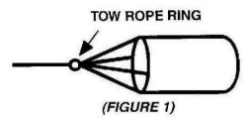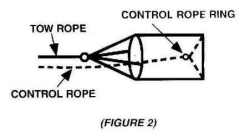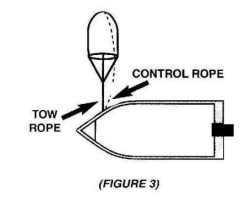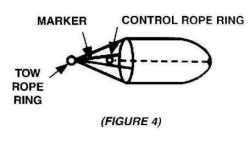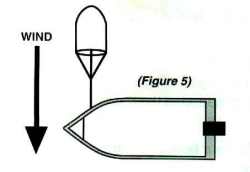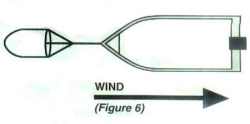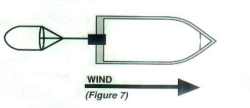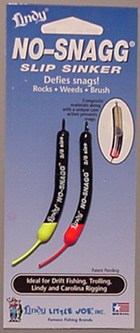
|
|||||||||||

Free 90 day Risk free trial offer click here Promotional Team Favorites Lodging food and more 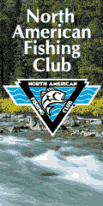
|
By Sam Anderson The edge of a specific structure is a great place to start looking for
spring walleyes. These edges form breaks, which almost act
like barriers to hold fish a little longer to feed before they move on.
These are physical boundaries between shallow food producing areas and
deep water areas of the lake. Here schools of active walleyes meet
concentrations of food and often this is a prime fishing area.
A Drift Control sea anchor is a cone-shaped under water windsock, similar to those at airports that detect changes in wind direction. Drift Control Sea Anchors aid boat control in two ways. First of all, they slow your drift in strong winds. Secondly, you can use them to fine-tune subtle boat maneuvers in rough seas or heavy current.(Click) here for more information and to order on-line Most anglers who fish large expansive lakes or rivers carry a sea anchor with them daily. The rule is usually that one Drift Control sea anchor is adequate for most boats and conditions. But, if you have a large boat and the sea anchor isn't doing its job you may need your large one off the front cleat and a smaller one at the stern. When fishing alone in a console boat in heavy winds, I troll headlong into the wind with a sea anchor tied at the bow of the boat. By letting out about 8 feet of rope, the bag trails next to the console. I can yank it out of the water with a safety cord if I need to without getting out of my seat and I never lose control of the boat. That maybe all right if you want to slow down your presentation, but control is still very important and you have to be able to control your presentation if you want the fish to bite. One way that I approach control is by tying a sea anchor at the bow of the boat and then backtrolling along a contour depth. By tying a Drift Control sea anchor at the bow of the boat it will hold the bow down and reduces the splashing of backtrolling into the wind. This control will even allow me to swim a 1/16 ounce Fuzzy Grub over the rocks and keep my boat pointed in the direction I want to go, rather than the way the wind wants to push me. Drifting the breakline on a windy lake or on a river that has current is truly a way to produce some very nice walleyes. The tackle is simple and the methods are easy to learn. First of all, I like to use jigs tipped with a crawler, leech or a minnow. The size of the jig should be just enough so that you can have contact with the bottom. For example on a river like the Mississippi, I prefer to use an 1/8 ounce or 1/4 ounce Fuzzy Grub or Timb'r Rock jig. The important factor here is the shape of the head. The head of the jig should be round or have the ability to be a stand-up type of jig. This design helps when you are in an area that has a lot of snags, especially in timber or on rocks. When I am on Mille Lac, I might switch to a lighter jig or maybe a Lindy Rig. It is very important to match your live bait delivery system to the environment that you are fishing.Terminal tackle for a live bait rig usually includes a walking sinker threaded onto the line on top of a barrel swivel. Keep the sinker weight as light as possible, yet heavy enough to let you feel the weight along the bottom. Usually 1/4 to 1/2 ounce sinkers should be adequate for shallow water fishing. From the opposite end of the swivel run a 2 to 4 foot snell of 6 to 8 pound test monofilament. Adjust the distance of your live-bait rig from the bottom according to water clarity. In stained water the fishwill be tight to the bottom so the rig should run closer to the bottom. Just the opposite frequently holds true in clear water.I prefer to use the Lindy Rig in this case because it allows me the versatility of getting the live bait right in the face of suspended walleyes. A plain hook or the new colored hooks are great, usually number 6 or number 8 finishes off the rig except for the bait. The Lindy No-Snagg Sinker replaces traditional slip sinkers. I want to fish as vertically as possible and the Lindy No-Snagg on a 3-way swivel gives me the control that I desire. The ability to maintain bottom contact, sense of feel to interpret changes in bottom conditions is essential for success.Lift and hold your sinker slightly off the bottom most of the time, keeping the bait near bottom and to feel the changes, such as transitions from rock to sand or mud. Deep fish like to lie along changes in bottom composition were the harder bottom of a dropoff joins the softer bottom of the basin. Pay particular attention to such changes along prominent points that gather walleyes.This same technique can be applied to a vast majority of some of the biggest and toughest walleye waters around.
Fish Clix Banner Exchange Please visit these site sponsors |
||||||||||
|---|---|---|---|---|---|---|---|---|---|---|---|
